A Tale of Two Cuts:
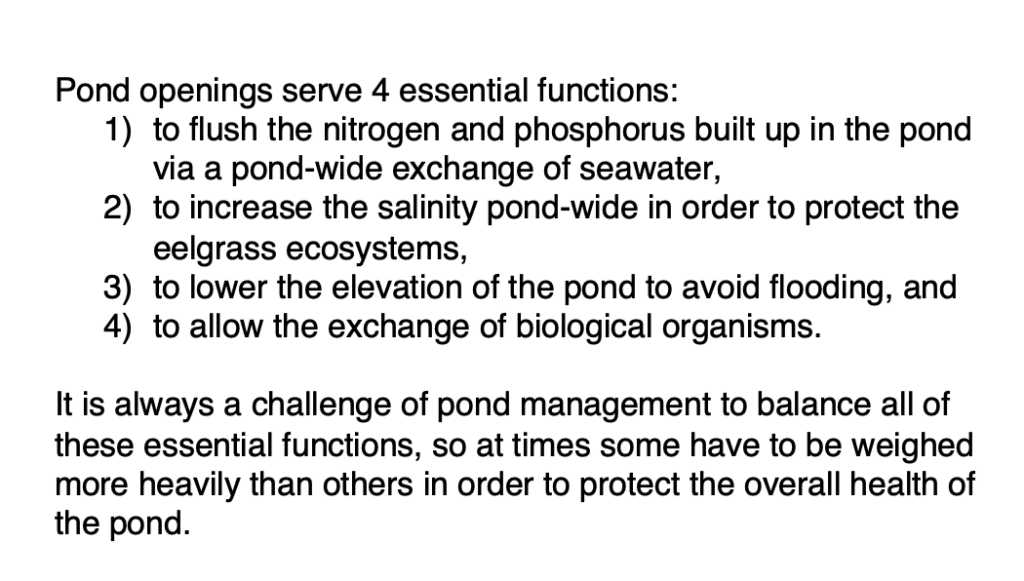
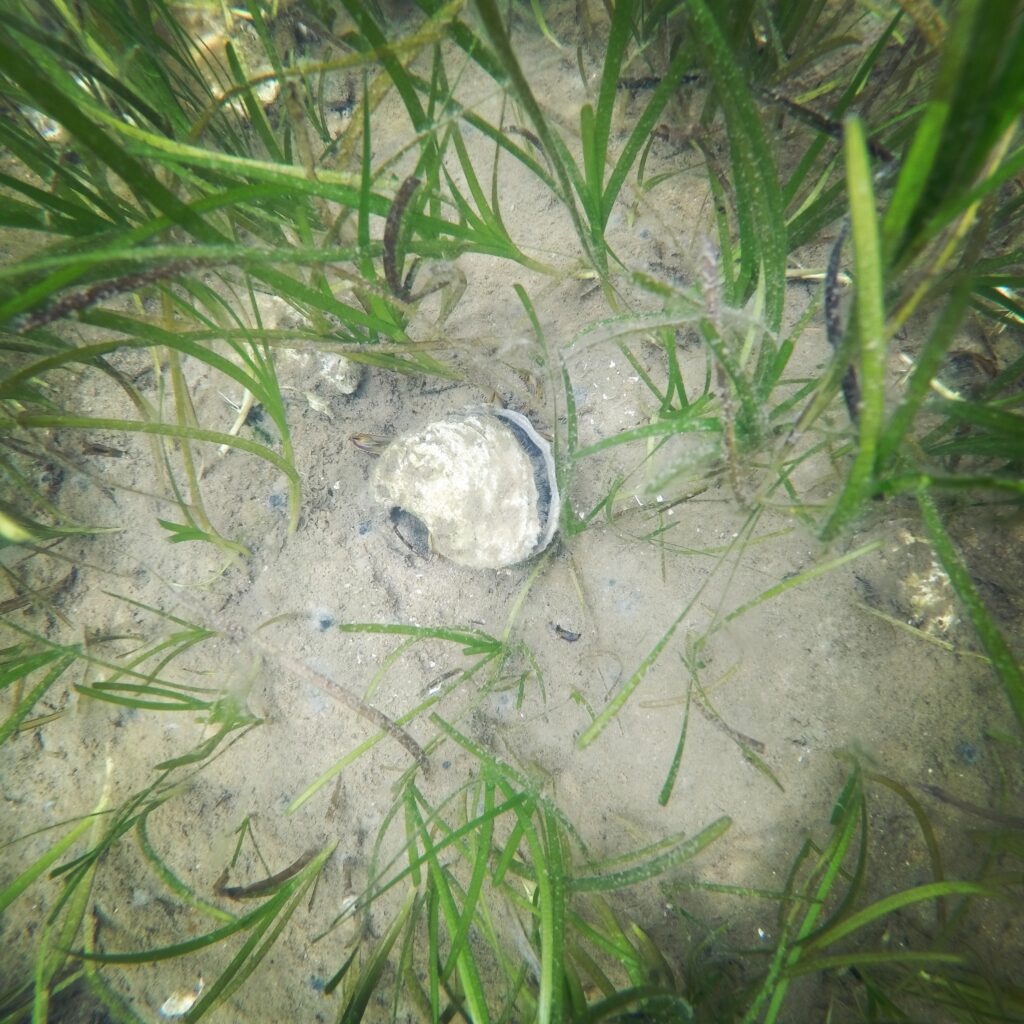
A decade of dredging in Edgartown Great Pond has increased the circulation of seawater throughout the Pond during openings, which has resulted in measurable improvements to water quality and ecosystem health. Before annual dredging began, EGP had impaired water quality, frequent algal blooms, and a struggling oyster population.
With regular dredging, seawater from the Atlantic Ocean reaches all corners and coves of the Pond during an opening. In ideal conditions (good tidal flow) EGP needs to be open a minimum of 9-11 days to flush all regions of the Pond and maximize salinity. In order to preserve the eelgrass ecosystem that has been established in the Pond, the salinity should not drop below 15 ppt (per EPA eelgrass scientist Phil Colarusso). In an ideal world, it would actually stay above 20ppt, but that has not been possible for EGP, at least thus far.
Successful openings of the Pond occur when the volume of Pond water exchanged with seawater is maximized such that the salinity increases pond-wide.
The Impacts of dredging on the Ecosystem Health of Edgartown Great Pond
For full details, see GPF’s flash report released to the Town in April:
2019 Summer Cut – POST DREDGING
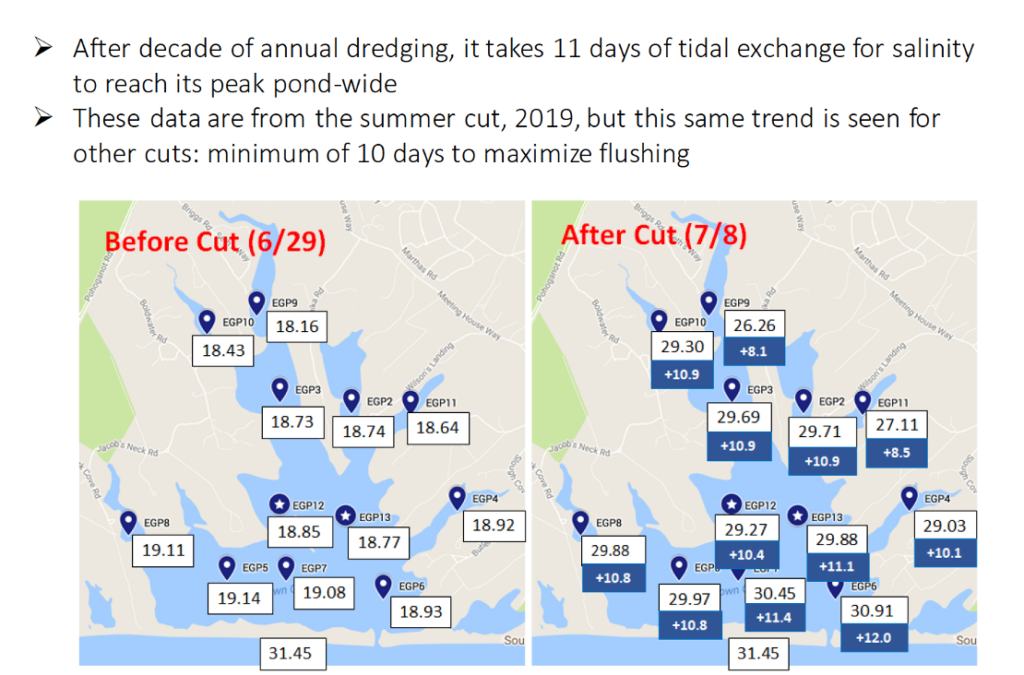
Following a year when winter dredging was skipped (2019/2020), the circulation within the Pond decreased and volume of tidal flow during an opening also likely decreased. The two pond cuts in 2020 have closed quickly (<11 days) and have not increased the salinity pond-wide. These less than ideal circulation and flushing conditions put the eelgrass ecosystem at risk because salinity is critically low, and the pond has not been adequately flushed of nitrogen and phosphorus.
2020 Late Spring Cut – NO DREDGING
- Maximum salinity was reached 4 days after the cut
- Not only was the duration of the opening insufficient to flush the pond of nutrients (nitrogen and phosphorus) but the volume of water exchanged was inadequate to increase the salinity pond-wide
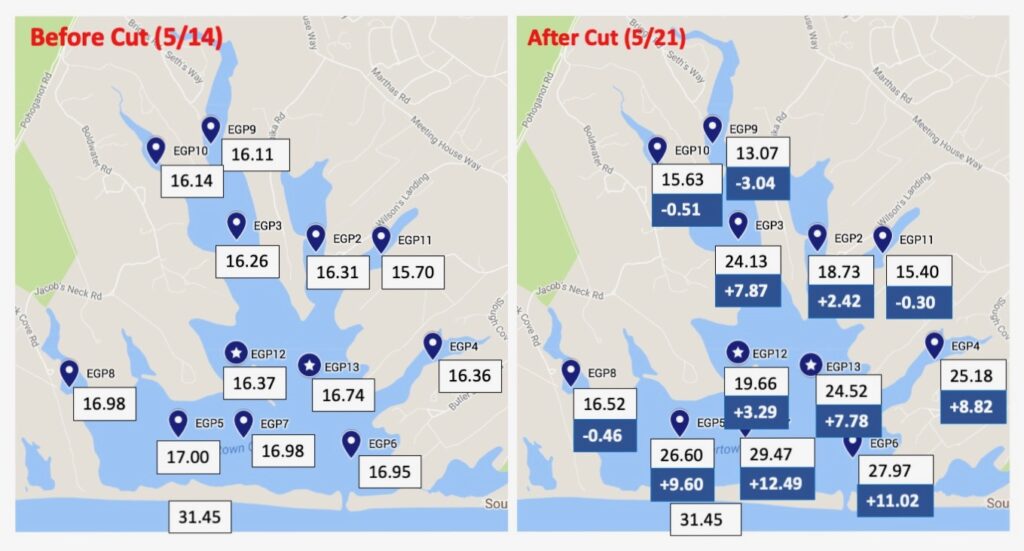
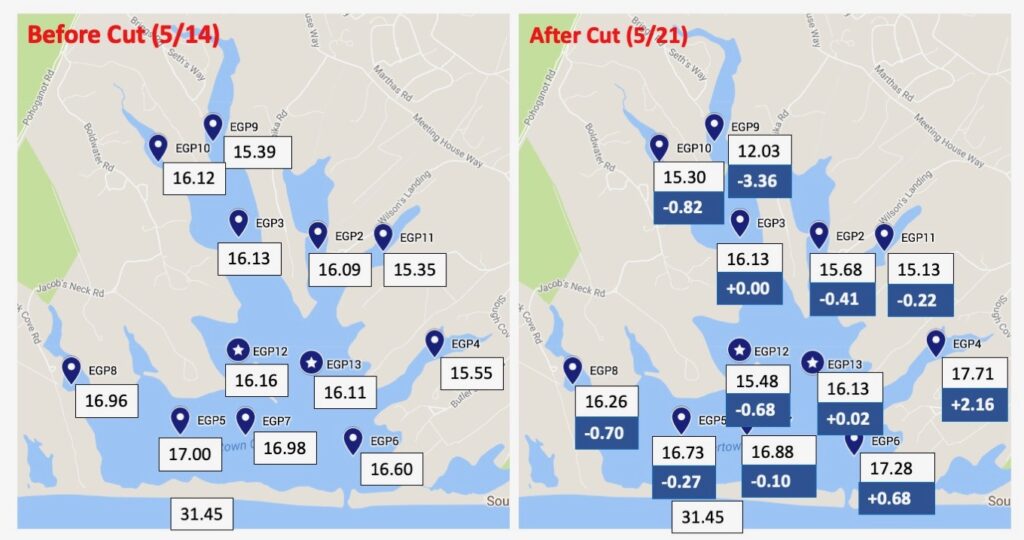
Ideal pond opening conditions are achieved through regular dredging of the channel north of the barrier beach. Based upon the advice of the Edgartown Shellfish Committee and the Shellfish Constable, Paul Bagnall, the Town of Edgartown and its Dredge Committee have agreed to resume their historic responsibility for regular dredging of the Great Pond this winter (2020/2021). We want to express our appreciation for the effectiveness of our long-standing public/private partnership with the Town to protect and preserve Edgartown Great Pond.

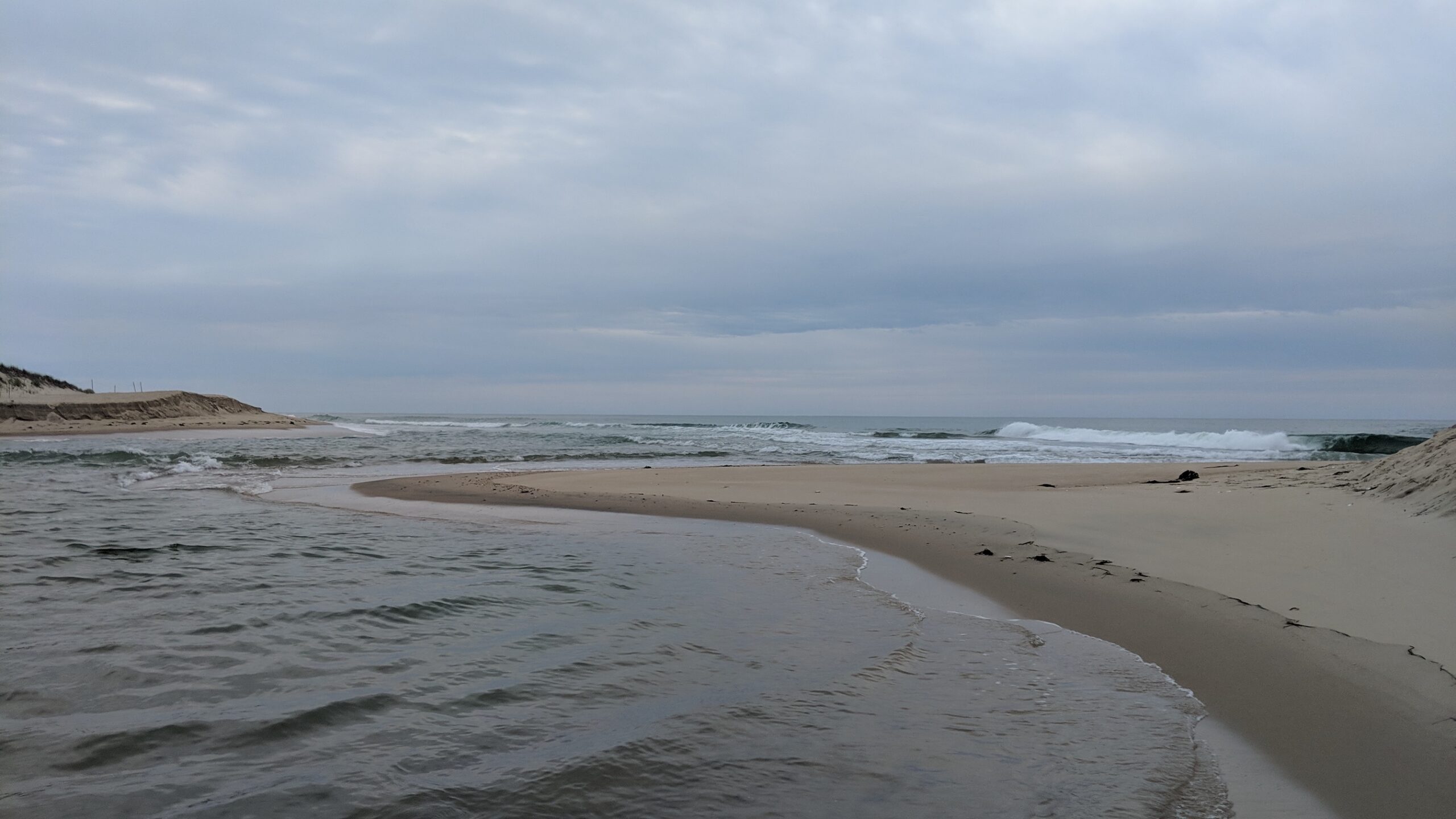
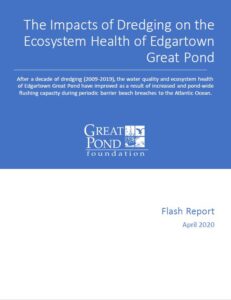
2 thoughts on “Dredging Is Essential to Pond Health”
Comments are closed.